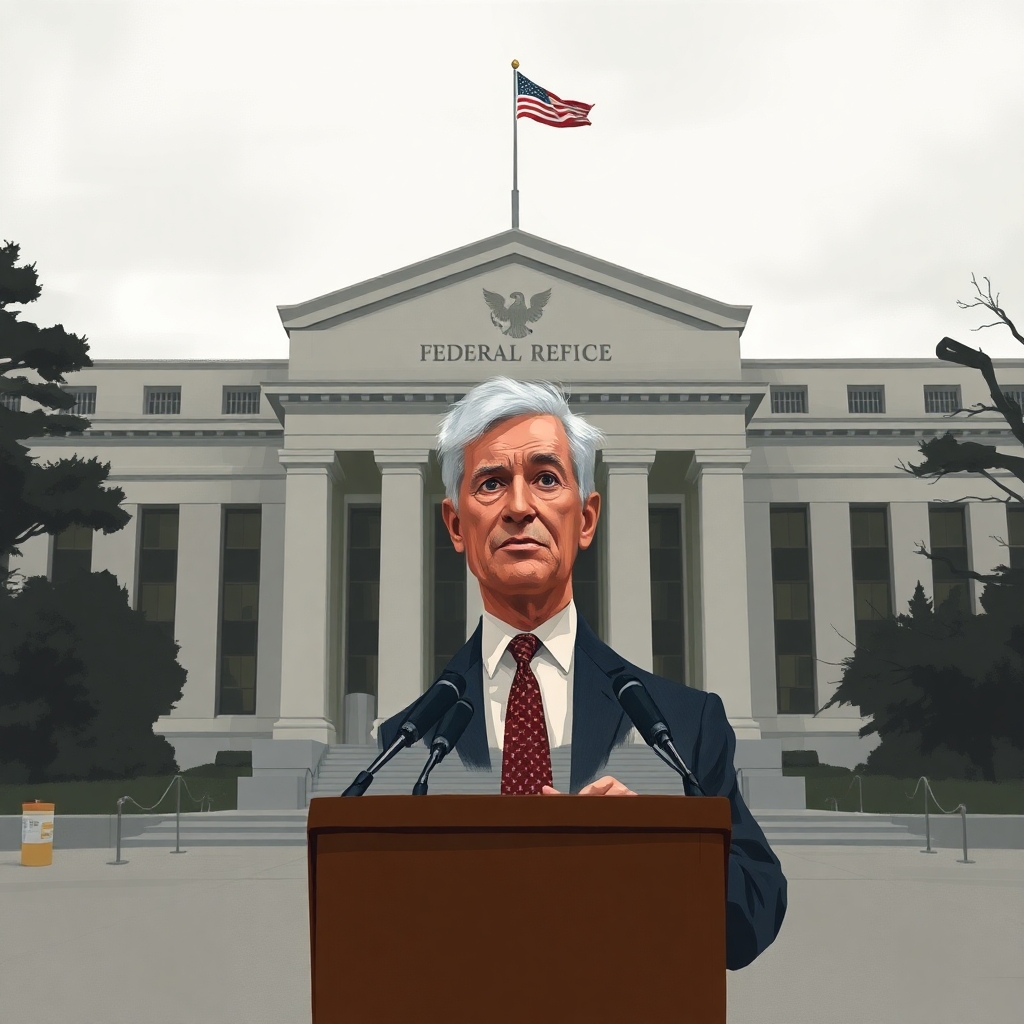Fed Holds Rates at 4.25–4.5%, Hints at Possible Cuts Later This Year
In a decision that didn’t surprise many, the U.S. Federal Reserve announced it would leave interest rates unchanged, holding steady at a range between 4.25% and 4.5%. While the move itself was expected, the real headline came from a change in tone: Fed officials now seem to be signaling that a rate cut may be coming before the year wraps up.
This shift marks a pivotal moment in U.S. monetary policy. After nearly two years of aggressive rate hikes designed to fight inflation, the Fed now appears to be moving into a new phase—one that may involve loosening monetary conditions if inflation continues to ease.
Why the Pause? Confidence Is Growing
Holding rates steady for the third straight time is a sign that the Fed is becoming more confident its inflation-fighting strategy is paying off. Inflation, which reached alarming levels in 2022, has been slowing steadily. The most recent Consumer Price Index (CPI) data shows inflation running just below 3.5% annually.
During his press conference, Fed Chair Jerome Powell emphasized that the Fed remains guided by the data. “We’re encouraged by the progress we’re seeing on inflation,” he said, “but we’re not ready to declare victory just yet. We need to see continued progress before making any moves.”
Economic Conditions Are a Mixed Bag
The Fed’s change in posture comes amid a complicated economic backdrop. On one side, the labor market remains resilient. Unemployment is near historic lows at 3.8%, and wage growth has started to cool slightly—both positive signs for inflation.
But not everything is looking up. The housing and manufacturing sectors are showing signs of weakness, and consumer confidence is fragile, likely weighed down by high borrowing costs.
The economy grew just 1.4% in the first quarter, below expectations, which points to a slowdown rather than a full-blown recession. Consumer spending is holding up but has lost momentum. At the same time, access to credit has tightened, especially for small businesses and individuals, as banks grow more conservative.
All of this puts the Fed in a tricky spot: inflation hasn’t fully disappeared, but the risk of going too far and stalling economic growth is becoming more real.
How Markets Reacted: Stocks Up, Yields Down
Markets were quick to react to the Fed’s slightly more dovish stance. The S&P 500 climbed 1.6% after the announcement, while the Nasdaq soared more than 2% as investors bet on lower borrowing costs boosting stock valuations.
Bond markets followed suit. Yields on 10-year U.S. Treasury notes fell below 4%, indicating expectations that the Fed may cut rates soon. In fact, futures markets now show a 75% chance of at least one cut by December, according to CME’s FedWatch tool.
Gold prices rose, the U.S. dollar dipped slightly, and even cryptocurrencies like Bitcoin jumped—driven by optimism around improved liquidity conditions.
📰 Bitcoin Dips Below $100K Amid Strait of Hormuz Oil Fears – CrypTonaryx

https://www.federalreserve.gov/monetarypolicy.htm
What the Dot Plot Tells Us
One of the most telling elements of the meeting was the updated “dot plot”—a chart that reveals Fed officials’ expectations for future interest rates. The latest forecast shows that policymakers anticipate one or two rate cuts in 2025, and potentially one as soon as the fourth quarter of this year.
Still, Powell made it clear that any cuts will depend on continued improvement in inflation. “We’re not on autopilot,” he said. “Any decision to cut rates will come from the data—not market speculation.”
Even so, the message is clear: the Fed is no longer focused only on tightening. The focus is now slowly shifting toward when—and how much—to ease.
Inflation Outlook: Slowly Moving in the Right Direction
The Fed’s target is to bring inflation down to 2%, and while we’re not there yet, recent data suggests we’re heading in the right direction. The core Personal Consumption Expenditures (PCE) index, which the Fed closely watches, dropped to 3.2% year-over-year—its lowest level since early 2021.
Energy costs have cooled, supply chains have mostly normalized, and commodity prices have stabilized. Even rent and housing-related inflation, a major driver of CPI, is finally starting to ease, although it’s still elevated in many cities.
If current trends continue, Fed officials believe inflation could fall to just above 2.5% by year’s end—enough room for rate cuts without triggering another inflation spike.
Risks Remain: Both at Home and Abroad
Despite this cautiously optimistic outlook, there are still risks that could throw things off course. International tensions—especially in regions like the Middle East or Eastern Europe—could lead to fresh supply disruptions or rising energy prices.
At home, rising credit delinquencies and the resumption of student loan payments could weigh on consumer spending. And with a contentious U.S. presidential election on the horizon, the political environment may introduce additional uncertainty into the Fed’s already delicate balancing act.
Powell acknowledged these risks briefly: “We’re always on alert for external shocks or systemic risks. Our main goal remains to support a healthy economy and a stable financial system.”
Looking Ahead: Is This the Turning Point?
The Fed’s latest update suggests that a major shift is underway—from a singular focus on inflation control to a broader, more balanced approach. While rate cuts aren’t guaranteed, they’re clearly on the table now for the first time in over two years.
For consumers, businesses, and investors alike, that’s good news. Lower interest rates would mean more affordable loans, better access to credit, and a friendlier environment for economic growth—assuming inflation continues its downward trend.
In short, the Fed’s decision to pause at 4.25–4.5% could mark a key turning point. While caution remains, the path toward easing is no longer just speculation—it’s part of the conversation.
